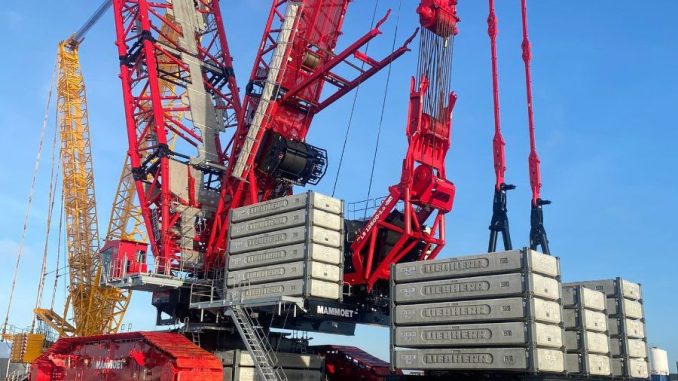
Mammoet has received its first Liebherr LR12500 crane. With a capacity of 2,500t and a 200m hook height, it will help to ensure the constructability of future energy and infrastructure developments.
Seeking greater build efficiencies, projects across a range of sectors are increasing the size and scope of prefabricated construction methodologies. As a result, assurance is needed that today’s project planning will match tomorrow’s equipment.
Energy projects in both the nuclear and oil & gas sectors will rely heavily on high capacity lifting equipment to bring forward the date of first power, while increasing the cost-effectiveness of the build phase in the case of new construction, and reducing downtime in the case of turnaround projects.
Offshore wind turbine components are growing at a fast rate, with nacelles of 1,000t, tower sections of 2,000t and jackets and monopiles of 3,000t in production. Companies across the sector need peace of mind that components currently planned can be transported and assembled by future equipment – as lead times increase, doubly so.
Similarly, civil megaprojects will depend on high-capacity lifting equipment that allow more construction to take place away from the project site, with both cost and environmental benefits.
In all cases, the new LR12500 unit will support these construction methodologies, building in larger pieces to cut down integration and transport schedules.
The LR12500 features a wide high-performance boom, which offers increased stability at reduced (self) weight. Despite its large size, it folds into dimensions small enough to remain in-gauge. Both features increase the cost-effectiveness and sustainability of its mobilization.
A 100 meter main boom and 108 meter luffing jib help the LR12500 to reach 200m maximum hook height. Dual engines with redundancy ensure high levels of reliability, as the crane can continue operation using just one power unit.










































